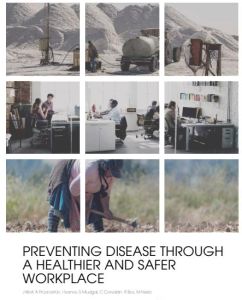Join getAbstract to access the summary!

Join getAbstract to access the summary!
I. Ivanov, A. Prüss-Ustün, S. Mudgal, C. Corvalán, R. Bos and M. Neira
Preventing Diseases Through a Healthier and Safer Workplace
WHO, 2018
What's inside?
Millions of people get sick and even die because of adverse workplace conditions.
Recommendation
Of all cardiovascular deaths in the working age population, 10%-20% are work-related; as are 25% of 1.7 million lung cancer diagnoses and 11% of depressions. Employers and regulators could have prevented many of these deaths and illnesses through workplace safety interventions and employee protection laws. In this quick-read overview of years of in-depth research, the World Health Organization explores the health risks of various types of work. The report also offers practical suggestions for improvements to the workplace that can help combat a wide range of infectious and noncommunicable diseases.
Summary
About the Authors
The World Health Organization is a specialized agency of the United Nations that is responsible for international public health.

















Comment on this summary